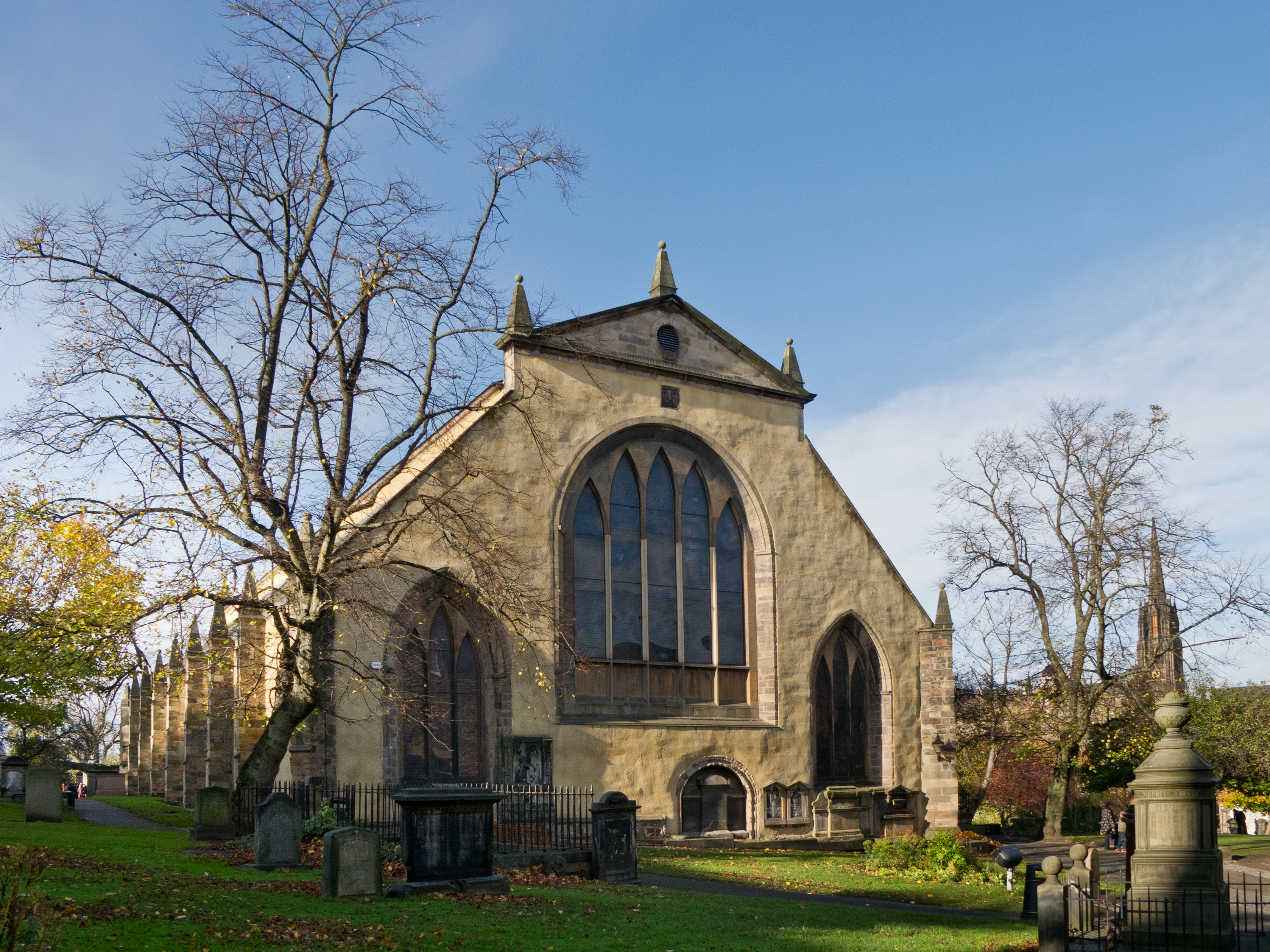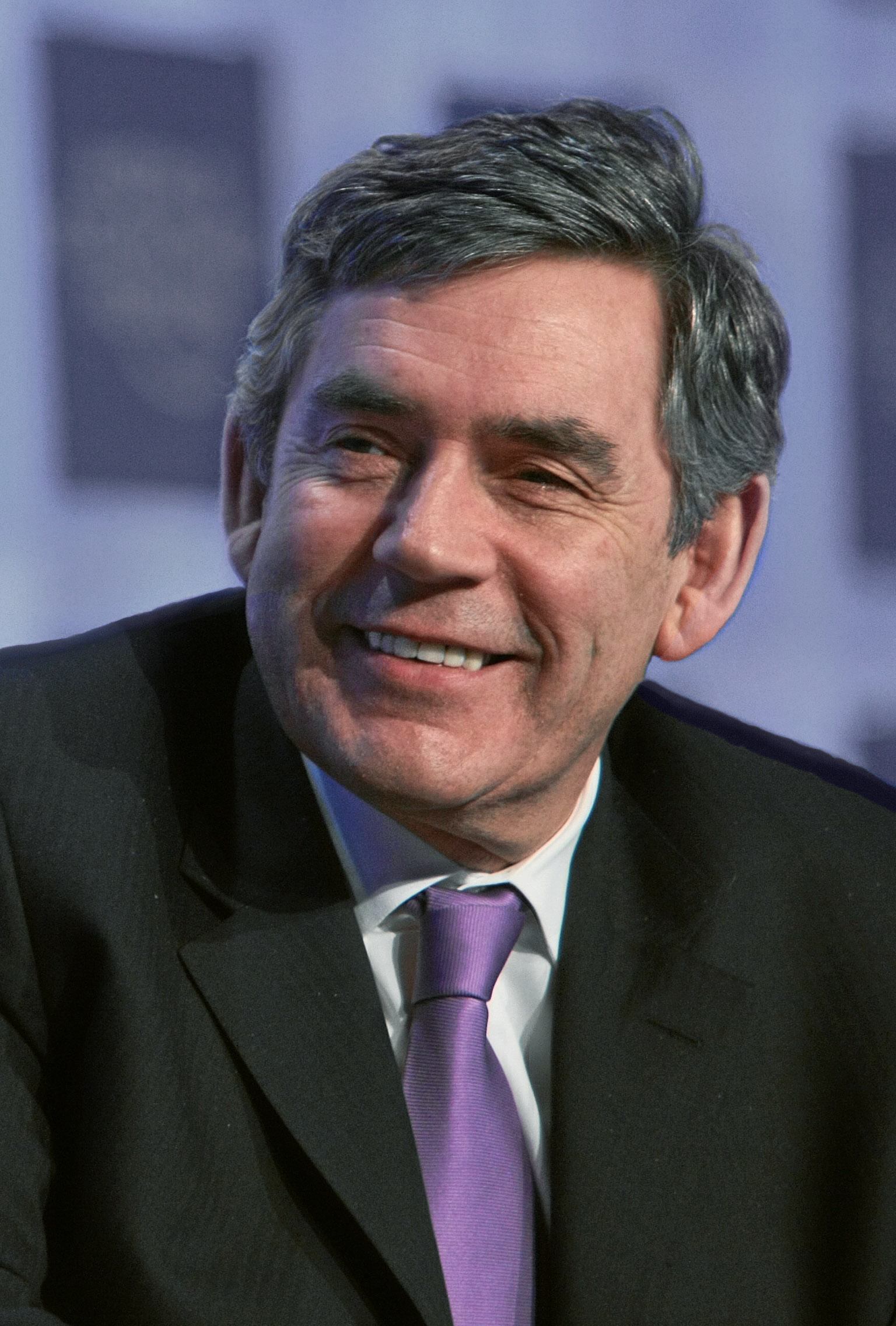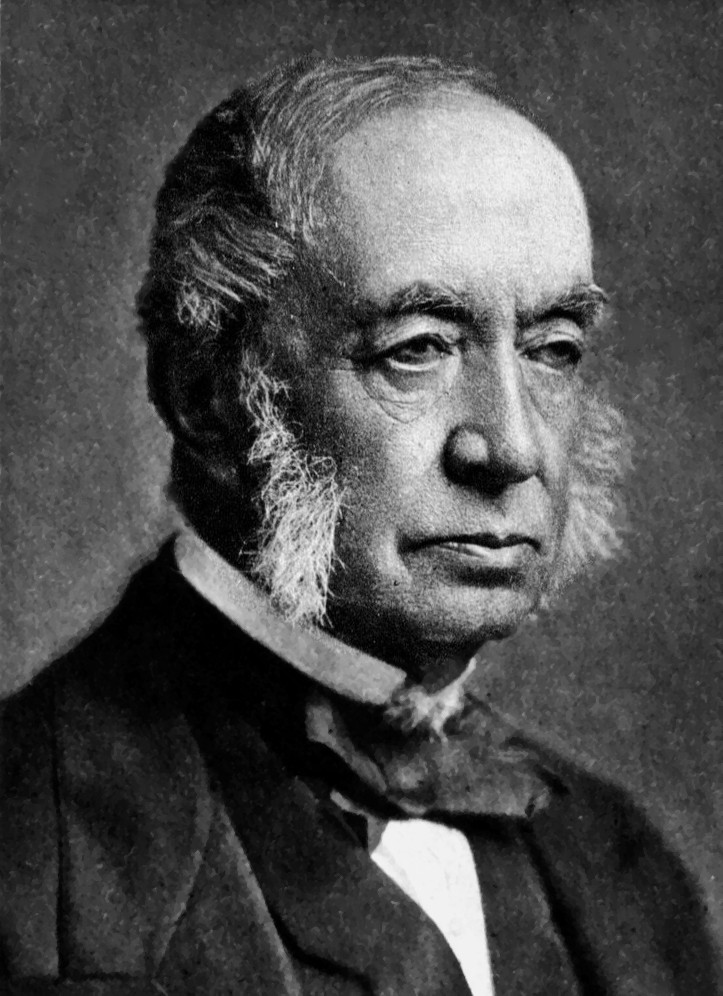|
John Inglis (moderator)
John Inglis (1762–1834) was a Scottish minister of the Church of Scotland. He served as minister of Greyfriars Kirk and was Moderator of the General Assembly of the Church of Scotland in 1804. Life He was born in 1762 in the manse at Forteviot the youngest son of Mary Bryce and her husband, Rev Harry Inglis, the local minister. He studied Theology at the University of Edinburgh and was licensed to preach in September 1785 by the Presbytery of Perth. He found a patron and was ordained in Tibbermore church in July 1786. In October 1799 he was translated to Old Greyfraiars in Edinburgh. In 1804 the University granted him an honorary doctorate (DD) and later that same year he was elected Moderator of the General Assembly. He was then living at 5 Nicolson Street, a short distance from the church. In 1810 he was made Dean of the Chapel Royal serving George IV. By 1820 he had moved to 43 George Square. In 1824 he instigated the Committee on Foreign Missions within the Church of Sc ... [...More Info...] [...Related Items...] OR: [Wikipedia] [Google] [Baidu] |
Greyfriars Kirk - 01
Greyfriars, Grayfriars or Gray Friars is a term for Franciscan Order of Friars Minor, in particular, the Conventual Franciscans. The term often refers to buildings or districts formerly associated with the order. Former Friaries * Greyfriars, Bedford * Greyfriars, Beverley, Yorkshire, England * Greyfriars, Bristol * Greyfriars, Canterbury, earliest English Franciscan friary * Greyfriars, Coventry * Greyfriars, Dorchester * Greyfriars, Dunwich, dissolved in 1538 some ruins remain as a Scheduled Ancient Monument * Greyfriars, Gloucester, the ruins of a monastery, also a street named after the same * Greyfriars, Ipswich, founded before 1236, virtually nothing remains * Greyfriars, King's Lynn, the tower survives and is a prominent local landmark * Greyfriars, Lincoln, former Franciscan friary; only the infirmary now survives * Greyfriars, Leicester, original burial place of Richard III of England * Greyfriars, London * GreyFriars, Newcastle-upon-Tyne, founded 1327, dissolved 153 ... [...More Info...] [...Related Items...] OR: [Wikipedia] [Google] [Baidu] |
George IV Of The United Kingdom
George IV (George Augustus Frederick; 12 August 1762 – 26 June 1830) was King of the United Kingdom of Great Britain and Ireland and King of Hanover from the death of his father, King George III, on 29 January 1820, until his own death ten years later. At the time of his accession to the throne, he was acting as Prince Regent, having done so since 5 February 1811, during his father's final mental illness. George IV was the eldest child of King George III and Queen Charlotte. He led an extravagant lifestyle that contributed to the fashions of the Regency era. He was a patron of new forms of leisure, style and taste. He commissioned John Nash to build the Royal Pavilion in Brighton and remodel Buckingham Palace, and commissioned Jeffry Wyatville to rebuild Windsor Castle. George's charm and culture earned him the title "the first gentleman of England", but his dissolute way of life and poor relationships with his parents and his wife, Caroline of Brunswick, earned him t ... [...More Info...] [...Related Items...] OR: [Wikipedia] [Google] [Baidu] |
Alumni Of The University Of Edinburgh
This is a list of notable graduates as well as non-graduate former students, academic staff, and university officials of the University of Edinburgh in Scotland. It also includes those who may be considered alumni by extension, having studied at institutions that later merged with the University of Edinburgh. The university is associated with 19 Nobel Prize laureates, three Turing Award winners, an Abel Prize laureate and Fields Medallist, four Pulitzer Prize winners, three Prime Ministers of the United Kingdom, and several Olympic gold medallists. Government and politics Heads of state and government United Kingdom Cabinet and Party Leaders Scottish Cabinet and Party Leaders Current Members of the House of Commons * Wendy Chamberlain, MP for North East Fife * Joanna Cherry, MP for Edinburgh South West * Colin Clark, MP for Gordon * Anneliese Dodds, MP for Oxford East * Kate Green, MP for Stretford and Urmston * John Howell, MP for Henley * Neil Hudson, M ... [...More Info...] [...Related Items...] OR: [Wikipedia] [Google] [Baidu] |
19th-century Ministers Of The Church Of Scotland
The 19th (nineteenth) century began on 1 January 1801 ( MDCCCI), and ended on 31 December 1900 ( MCM). The 19th century was the ninth century of the 2nd millennium. The 19th century was characterized by vast social upheaval. Slavery was abolished in much of Europe and the Americas. The First Industrial Revolution, though it began in the late 18th century, expanding beyond its British homeland for the first time during this century, particularly remaking the economies and societies of the Low Countries, the Rhineland, Northern Italy, and the Northeastern United States. A few decades later, the Second Industrial Revolution led to ever more massive urbanization and much higher levels of productivity, profit, and prosperity, a pattern that continued into the 20th century. The Islamic gunpowder empires fell into decline and European imperialism brought much of South Asia, Southeast Asia, and almost all of Africa under colonial rule. It was also marked by the collapse of the large ... [...More Info...] [...Related Items...] OR: [Wikipedia] [Google] [Baidu] |
1834 Deaths
Events January–March * January – The Wilmington and Raleigh Railroad is chartered in Wilmington, North Carolina. * January 1 – Zollverein (Germany): Customs charges are abolished at borders within its member states. * January 3 – The government of Mexico imprisons Stephen F. Austin in Mexico City. * February 13 – Robert Owen organizes the Grand National Consolidated Trades Union in the United Kingdom. * March 6 – York, Upper Canada, is incorporated as Toronto. * March 11 – The United States Survey of the Coast is transferred to the Department of the Navy. * March 14 – John Herschel discovers the open cluster of stars now known as NGC 3603, observing from the Cape of Good Hope. * March 28 – Andrew Jackson is censured by the United States Congress (expunged in 1837). April–June * April 10 – The LaLaurie mansion in New Orleans burns, and Madame Marie Delphine LaLaurie flees to France. * April 14 – The Whig Party is officially named by ... [...More Info...] [...Related Items...] OR: [Wikipedia] [Google] [Baidu] |
1762 Births
Year 176 ( CLXXVI) was a leap year starting on Sunday (link will display the full calendar) of the Julian calendar. At the time, it was known as the Year of the Consulship of Proculus and Aper (or, less frequently, year 929 ''Ab urbe condita''). The denomination 176 for this year has been used since the early medieval period, when the Anno Domini calendar era became the prevalent method in Europe for naming years. Events By place Roman Empire * November 27 – Emperor Marcus Aurelius grants his son Commodus the rank of ''Imperator'', and makes him Supreme Commander of the Roman legions. * December 23 – Marcus Aurelius and Commodus enter Rome after a campaign north of the Alps, and receive a triumph for their victories over the Germanic tribes. * The Equestrian Statue of Marcus Aurelius is made. It is now kept at Museo Capitolini in Rome (approximate date). Births * Fa Zheng, Chinese nobleman and adviser (d. 220) * Liu Bian, Chinese emperor of the Han Dynasty ( ... [...More Info...] [...Related Items...] OR: [Wikipedia] [Google] [Baidu] |
John Inglis, Lord Glencorse
Rt Hon John Inglis, Lord Glencorse FRSE DCL LLD (21 August 1810 – 20 August 1891) was a Scottish politician and judge. He was Lord President of the Court of Session (1867–1891).John Inglis Lord Glencorse University of Glasgow (see "summary" for birth/death dates) Life The youngest son of Maria Moxham Passmore and Rev John Inglis DD (1761–1834), minister of Old , Inglis was born on 21 August 1810 at 43 G ...[...More Info...] [...Related Items...] OR: [Wikipedia] [Google] [Baidu] |
British Army
The British Army is the principal land warfare force of the United Kingdom, a part of the British Armed Forces along with the Royal Navy and the Royal Air Force. , the British Army comprises 79,380 regular full-time personnel, 4,090 Gurkhas, and 28,330 volunteer reserve personnel. The modern British Army traces back to 1707, with antecedents in the English Army and Scots Army that were created during the Restoration in 1660. The term ''British Army'' was adopted in 1707 after the Acts of Union between England and Scotland. Members of the British Army swear allegiance to the monarch as their commander-in-chief, but the Bill of Rights of 1689 and Claim of Right Act 1689 require parliamentary consent for the Crown to maintain a peacetime standing army. Therefore, Parliament approves the army by passing an Armed Forces Act at least once every five years. The army is administered by the Ministry of Defence and commanded by the Chief of the General Staff. The Brit ... [...More Info...] [...Related Items...] OR: [Wikipedia] [Google] [Baidu] |
Stevenson McGill
Stevenson McGill (1765-1840) was a Scottish minister of the Church of Scotland who served as Moderator of the General Assembly of the Church of Scotland in 1828. He was an author and was elected to be a professor of divinity at Glasgow University. Early life and education Stevenson was born in Port Glasgow on 19 January 1765 the son of Thomas Macgill, a shipbuilder on the River Clyde. His mother, Frances Welsh, daughter of George Welsh, esq., of Lochharet in East Lothian, may have been a descendant of the John Welch, son-in-law of John Knox. Macgill was educated in the parish school at Port Glasgow and Glasgow University, which he entered at the age of ten and took the nine years' course, gaining many distinctions in classics and theology. Ministry and early writing After acting as a private tutor to the Earl of Buchan, among others, he was licensed to preach by the Paisley presbytery in 1790, and in the following year was presented to the parish of Eastwood, Renfrewshir ... [...More Info...] [...Related Items...] OR: [Wikipedia] [Google] [Baidu] |
New Calton Burial Ground
New Calton Burial Ground is a burial ground in Edinburgh. It was built as an overspill and functional replacement to Old Calton Burial Ground and lies half a mile to its east on Regent Road in Edinburgh, Scotland, on the south-east slopes of Calton Hill. On its southern edge it attaches to the north-east edge of the Canongate in the Old Town. It lies on a fairly steep south-facing slope with views to Holyrood Palace, the Scottish Parliament Building and Arthur’s Seat. Of particular note is the Stevenson family plot, the resting place of several notable members of the family of Robert Louis Stevenson. Background It was initially necessitated by the construction of Waterloo Place, which had cut through the Old Calton Burial Ground, requiring an immediate re-interment of the bodies affected. This major engineering exercise took from 1817 to 1820 to complete. Bodies were carefully identified and moved, with their corresponding gravestone, if existing, to the new cemetery. D ... [...More Info...] [...Related Items...] OR: [Wikipedia] [Google] [Baidu] |
George Square, Edinburgh
George Square ( gd, Ceàrnag Sheòrais) is a city square in Edinburgh, Scotland. It is in the south of the city centre, adjacent to The Meadows (park), the Meadows. It was laid out in 1766 outside the overcrowded Old Town, Edinburgh, Old Town, and was a popular residential area for Edinburgh's better-off citizens. In the 1960s, much of the square was redeveloped by the University of Edinburgh, although the Cockburn Association and the Architectural Heritage Society of Scotland, Georgian Group of Edinburgh protested. Most but not all buildings on the square now belong to the university (among the exceptions being the Dominican Order, Dominican St Albert's Catholic Chaplaincy, Edinburgh, priory of St Albert the Great). Principal buildings include the Gordon Aikman Lecture Theatre, Edinburgh University Library, 40 George Square and Appleton Tower. Georgian square The square was laid out in 1766 by the builder James Brown, and comprised modest, typically Georgian architecture, Geo ... [...More Info...] [...Related Items...] OR: [Wikipedia] [Google] [Baidu] |







